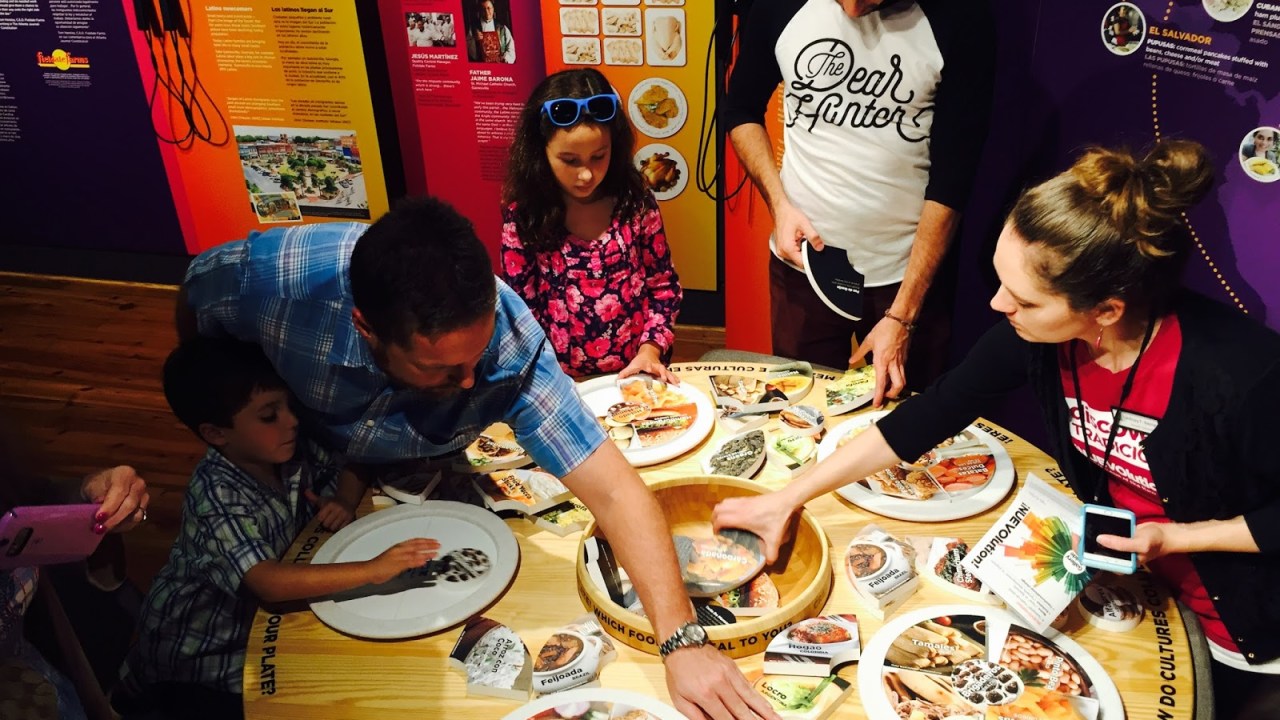
October 2015.
The fifth grader looked up at the large map of the U.S. and distracted her class as they read snapshots of Census data. “It smells like paint in here,” she said.
That wasn’t exactly the reaction we wanted from visitors to the ¡NUEVOlution! Latinos and the New South exhibit, but it was fitting. Levine Museum had spent a month mounting the exhibition, nearly three years developing the content and processes that informed it, and several years before that honing the concept. But even though the exhibit had been up for more than a month and had received more than a thousand visitors, it did smell like paint, because exhibit staff had still been adding touches. Installation hadn’t fallen behind. Instead, it had continued to grow thanks to our willingness to listen to community input.
Just prior to the opening of the exhibit, the team added a participatory sculpture, reconfigured spaces so they were more intimate, and adapted and revised interactives based upon community feedback.
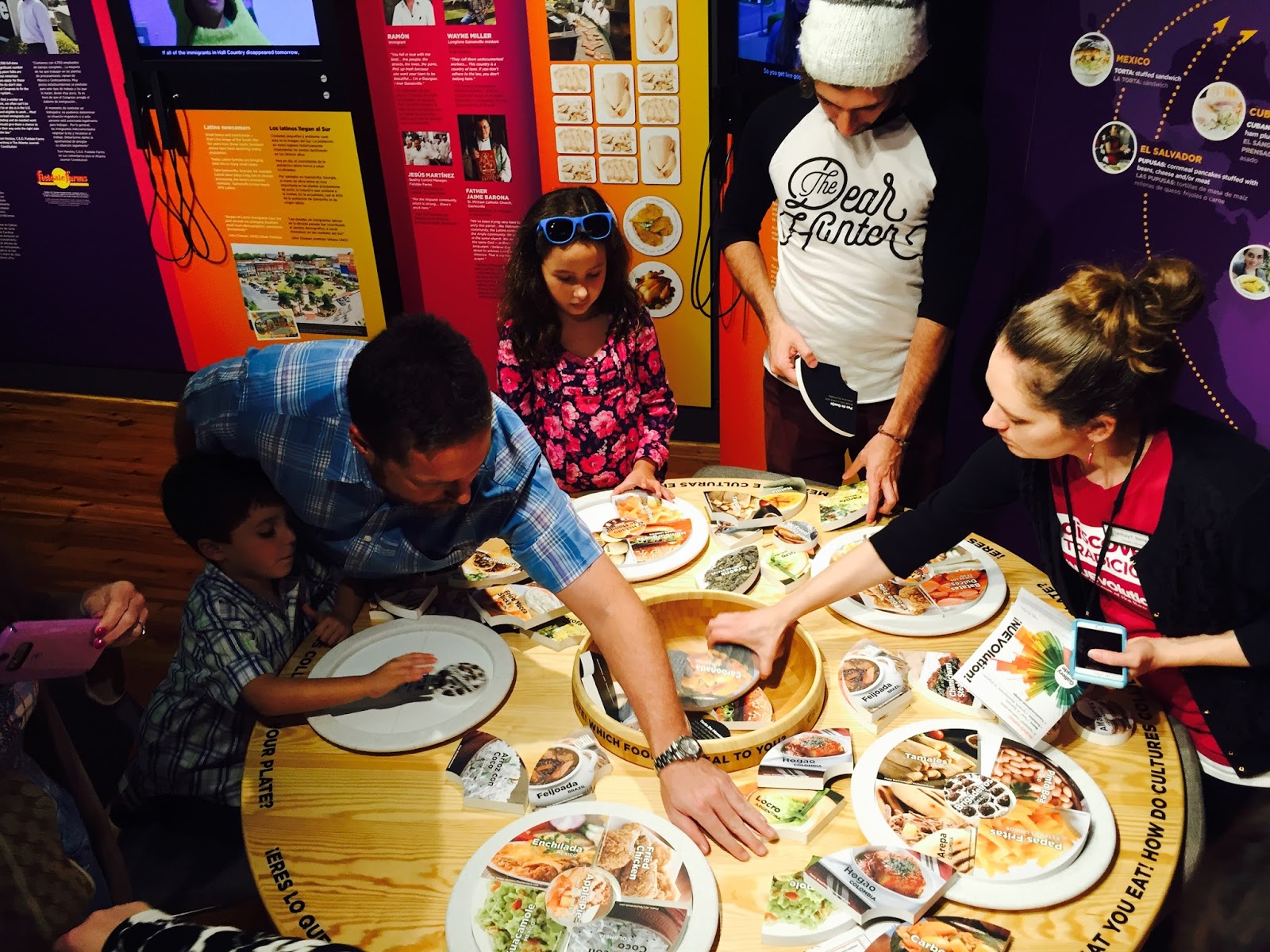 |
| Courtesy Rodrigo Dorfman |
¡NUEVOlution! developed out of multiple rounds of community input in conjunction with our curatorial team and Darcie Fohrman. In order to tell a complex, changing and current history, exhibit designers, developers and staff knew they could not and should not handle the story alone nor could they accept a single approach.
In the past 25 years, the Southeast emerged as America’s fastest-growing “immigrant gateway,” with Latino population in many cities going from barely 1% to 10% or more. Such rapid change has brought both stresses and opportunities—not only for communities but for the future of cultural institutions. As AAM’s Center for the Future of Museums has pointed out, by 2040, whites will no longer be the US’s majority racial/ethnic group – but currently only about 1 in 10 core museum visitors are people of color.
Each of these factors and the larger questions they raised compelled the Museum to take a critical look at what was driving change in Charlotte. In 2010, we had mounted the exhibit Changing Places which looked at demographic change in the Southeast, but subsequently recognized that the key lever in Charlotte was the impact of Latinos on the region.
In 2012, Levine Museum of the New South launched the LATINO NEW SOUTH Project. As a first step in the five-year initiative, Levine Museum invited the Atlanta History Center and the Birmingham Civil Rights Institute to join in a “learning network” to explore the Latino experience in the southeastern U.S. Because Latino immigration is transforming the entire South, including our three cities, it made sense to have partners in several parts of the South to understand the historical change. We believed that museums could play a vital role in the work, and that sharing information between institutions would help each of our organizations find effective strategies to truly engage Latino partners.
In Cornell University professor Michael Jones-Correa’s 2011 study “All Immigration is Local,” he observed that efforts are underway in almost every city to address immigrant integration, – full and meaningful participation in community life – but there is little trading of information between cities.
Our curiosity, and willingness to share in the learning process led us to successfully apply for a MetLife-funded Innovation Lab for Museums grant, administered by CFM, which completely shaped how the NUEVOlution! exhibit came together. Guided by EmcArts, the Lab called for “half-baked” ideas and we went in with questions, not answers. Questions informed the project, questions informed the sessions, and questions informed questions. We asked about what we didn’t know. Using what we learned, we decided to create an exhibit, and we approached the exhibition process the same way. The entire creation was to be a process—intentionally self-reflective around the ideas that emerged.
We developed ¡NUEVOlution! using feedback loops and rapid prototyping. Community feedback informed story selection and interactive development –even the logo and exhibit title were crowd sourced. Daring to learn something new, apply it, try it out on key stakeholders and then listen to what they had to say. Really listen. We did not just say “thanks for your input” and continue on down the original path, but were willing to stop and take in what we heard and try to make it real. For example community input directed us to make the exhibit more experiential than originally conceived. Another key component was flattening the traditional hierarchical structure of exhibit development. In the development of content and design elements, all feedback was considered and weighed equally. Topics were explored and developed with sustained community groups and their feedback was incorporated at every stage of exhibit creation; all staff were asked to weigh in and give their feedback – either in group settings, or via email or direct communications with the exhibit team. Throughout the process, we checked for resonance with our audience, and did not just depend upon a topic’s relevance or top down direction. This meant that the exhibit had relevance, community buy-in and the audience awareness of the project was building from each of the feedback sessions. We had created community ambassadors for the project.
Using this model resulted in several “big ideas” that successively changed the exhibit’s focus and required the redesign of sections and content before arriving at the final version of the exhibit. One of our early visions for the exhibit, “New South Revolutions” put the Latino impact in the context of a new wave of influencers following the sharecroppers, mill owners and boomtown builders in the preceding decades. There were three different versions of this exhibit vision with one being highly youth-focused. Another “big idea” for this exhibit centered on the concept of home and creating a sense of home. Each time we tested and tried out what the exhibit could be –its stories, its activities—we realized something more. The story was more than just a chronological shift, and yes, it was about home, but was bigger. We needed to think about identity and place-making.
A few months before the exhibit opened, a final feedback session revealed that many people wanted to make sure there was more nuance to the stories told in the exhibit. It was important that immigration was a part of the collection of stories, but it was not THE story, they wanted to ensure that the stories shown were not just stories of struggle but also of successes. They also desired a focus on language, race, and ethnicity. Because of this session, the Museum added sections “Leading in the Mainstream” and “Origins” and new interactives.
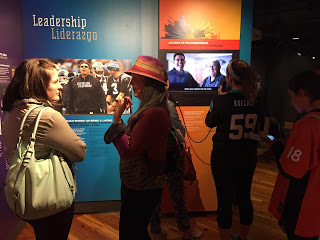 |
| Courtesy Rodrigo Dorfman |
To create an exhibit like ¡NUEVOlution!, museum staff had to put aside our egos and cultivate a real willingness to listen and engage differently. The process required us to develop a tolerance for ambiguity, the messiness of authentic collaboration, openness to failure and the need to recreate based upon feedback. But the final product—wet paint and all—was immensely better due to this iterative approach to exhibit development.

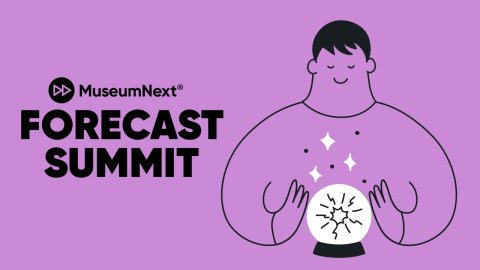
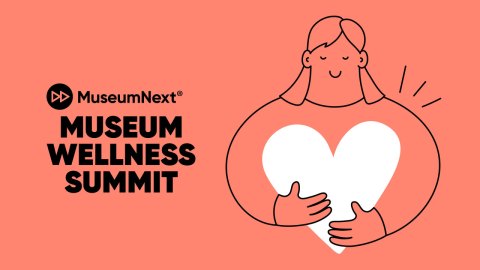
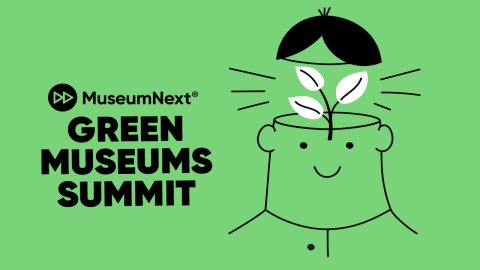



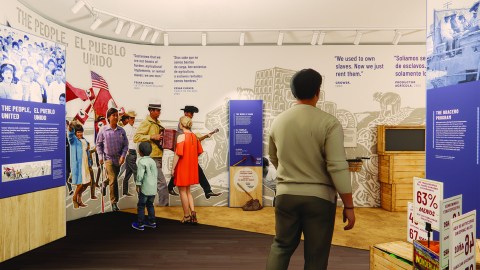
Would you all be willing to post more photos of the exhibition or put up exhibition text/images/themes online somewhere? This is great, but what you address above is vague enough to not get a sense of the exhibition story for those of us who unfortunately will not be able to see it. Thank you for sharing!
Absolutely – there is a page on the museum website that has images –
http://www.museumofthenewsouth.org/exhibits/nuevolution-latinos-and-the-new-south
AC&M who partnered to provide transadaptations throughout the exhibit (not straight translations, nuanced to share the ideas in the most culturally authentic manner) has a great blog post on the exhibit and their participation – they were wonderful to work with – http://acmconnect.com/blog/acm-helps-connect-community-with-bilingual-interactive-exhibit-nuevolution/